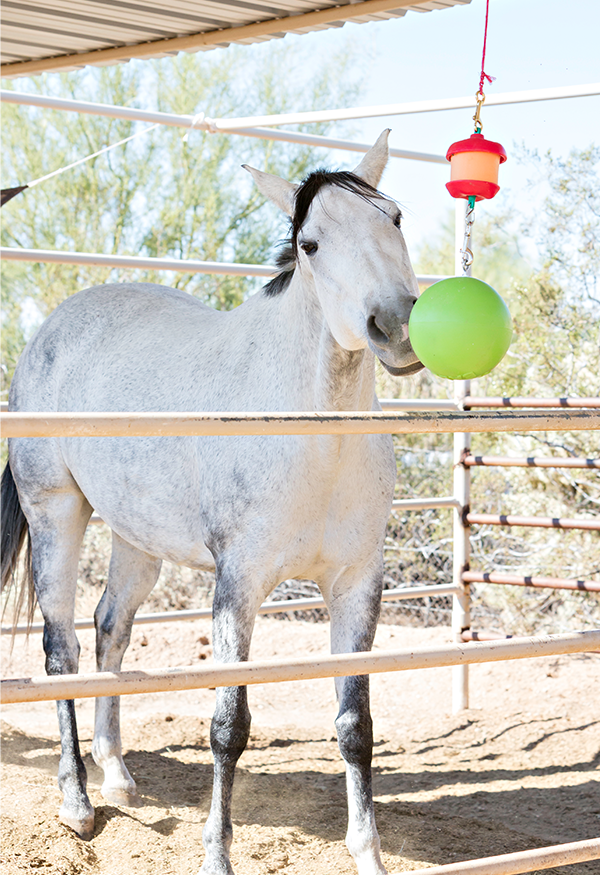Your Cart is Empty
Menu

How to Safely Introduce Dogs to Horses
January 30, 2024 3 min read
Dogs and horses happily co-exist together in thousands of stables up and down the country. But introducing the two animals does require careful consideration. Taking the time to learn the best practices of introducing a dog to a horse will ensure both animals have a happy and enjoyable time together.
Horses can be easily startled and it’s not uncommon for a dog to find themselves under a large hoof! Introducing the two animals in a calm environment can avoid injuries and unnecessary stress.
5 TIPS FOR INTRODUCING DOGS TO HORSES
1. ENSURE YOUR DOG KNOWS THE BASIC COMMANDS
Before even setting eyes on a horse, your dog should be trained in the basic commands. Knowing the usual “sit,” “stay” and “watch me” commands will ensure you can break your dog’s focus and move the attention onto you when necessary.
In addition, your dog should have a good recall. You want to be able to call them back to your side immediately if either of the animals are exhibiting signs of stress.
2. REWARD INDIFFERENCE TO THE HORSE
During the introduction, your goal is to desensitize your dog to the horse. This is especially important for puppies who are still learning about the world around them.
Initially, the horse will be intriguing and a novelty to your dog. Focus on rewarding your dog when they show any signs of indifference to the horse.
Behaviors that show the dog is not as interested in the horse include:
- Looking away
- Sniffing the ground
- Sitting
- Lying down
- Walking away from the horse
As soon as you spot these signs, reward and praise your dog. You are rewarding their lack of interest in the horse.
3. USE A LEASH
Keeping your dog on a leash will ensure you have good control over the introduction of the dog and horse. It’s not uncommon for a dog to want to chase or bark at a horse. By having them on a leash, you can quickly turn them around and move them away from the horse to correct this unwanted behavior.
Eventually your dog will be off-leash around the horse when they are both on the farm or on a ride together. Wait until you are confident that both animals are safe around each other before letting your dog off-leash around the horse.
4. START AT A DISTANCE
With the horse in a pasture, bring your dog into the neighboring field. Position yourself far enough away from the horse that your dog is paying little attention to them.
Slowly start to decrease the distance between your dog and the horse. Continue to reward your dog when they show signs of disinterest in the horse. If you find your dog is becoming agitated, you may have moved too close too quickly and need to take a few steps back.
Take your time and be patient, it’s important that your dog has a positive experience and associates the horse with delicious treats and good things. Don’t be afraid to end the training and come back another day if your dog is becoming too agitated.
5. KEEP AN EYE ON BODY LANGUAGE
Being able to read both your dog’s and horse’s body language will be key. The introduction to each other should be calm and peaceful. If either of the animals are starting to show signs of stress or agitation then they should be removed from each other.
Signs of a horse being stressed include:
- A raised tail
- Wide eyes
- Forward-pointing ears
- Stiff posture
- Widened nostrils
FINAL THOUGHTS
Introducing dogs to horses can be a complex process, but it's important for the safety of both animals. Starting with basic training, keeping your dog on a leash, and moving closer over time, are all great steps to ensure a safe and positive introduction.
If you follow these tips, you can help your dog and horse become great companions in no time!
Want more? Click here for more fun and helpful content.
HAVING A JOLLY GOOD TIME?
Keep the good times going! Sign up to receive monthly treats directly to your inbox!

TAKE 10% OFF
Signup for emails and take 10% off your first order!















